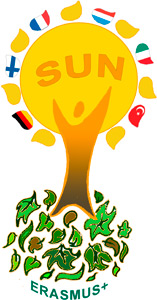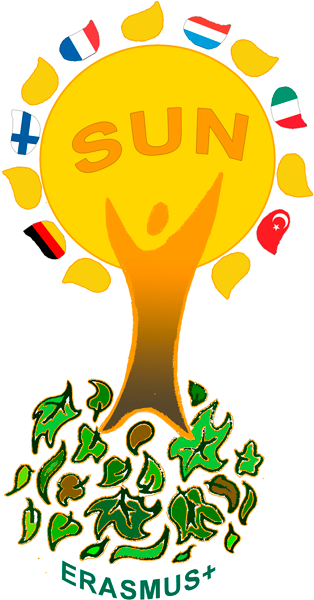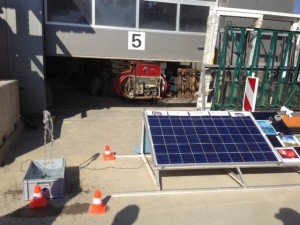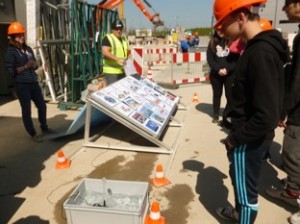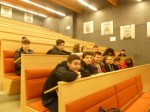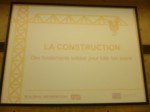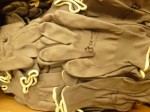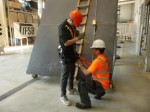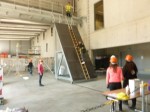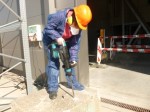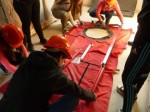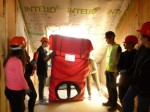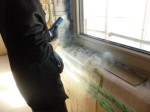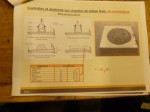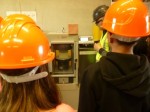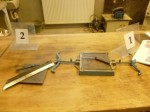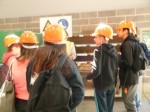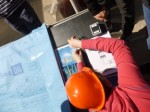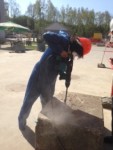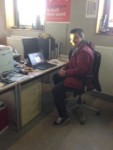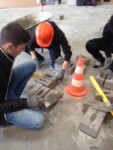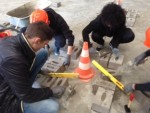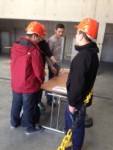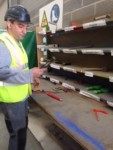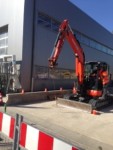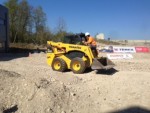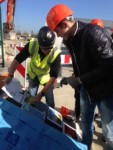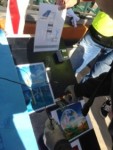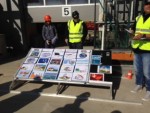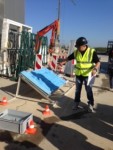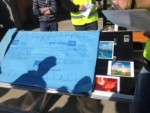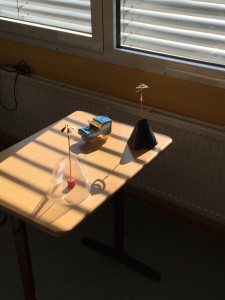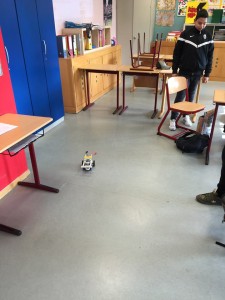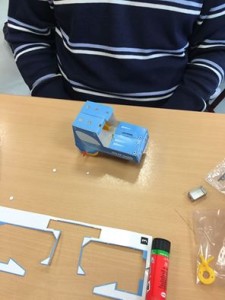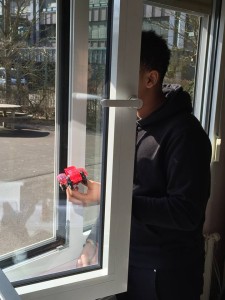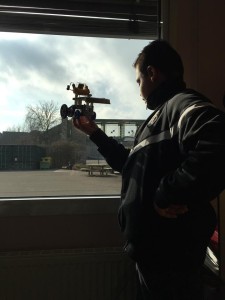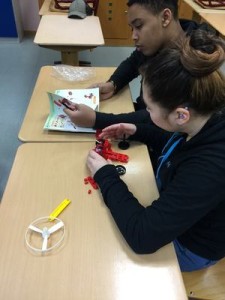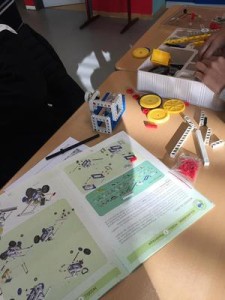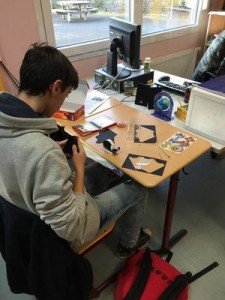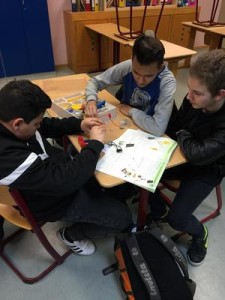use of solar energy
Luxembourg: Sonnenenergie nutzen
Mit Energie gehen wir täglich um. Energie wird erzeugt, umgewandelt, transportiert, gespeichert und verbraucht. Ohne Energie geht in unserem Alltag nichts. Wenn es dunkel wird, schaltest du das Licht an. Wenn dir kalt ist, drehst du die Heizung hoch. Das kostet Energie. Doch woher kommt die Energie, die wir so selbstverständlich jeden Tag nutzen?
Der größte Teil des weltweiten Energiebedarfs wird aus fossilen Brennstoffen wie Kohle, Erdöl und Erdgas gewonnen. Die fossilen Energiequellen sind begrenzt und ihre Nutzung schadet der Umwelt. Man kann aber Strom auch anders erzeugen und zwar mit erneuerbaren Energien. Energiequellen aus Sonne, Wind, Wasser, Pflanzen und Erdwärme sind klimafreundlich, sicher und unerschöpflich.
Täglich strahlt die Sonne in Richtung Erde. Diese Energie gilt es zu nutzen. Zwei unterschiedliche Technologien stehen zur Verfügung:
Solarthermie: Die Wärme der Sonne ist zur Energiegewinnung geeignet. Durch die Rohre der Sonnenkollektoren auf den Hausdächern strömt Wasser und das Wasser wird von der Sonne erhitzt. Die aufgenommene Wärme wird an einen Wassertank weitergeleitet. Das warme Wasser aus dem Tank benutzt man im Haushalt zum Baden und Duschen oder für die Heizung.
Photovoltaik: Die Sonne ist die größte Energiequelle der Erde. Auch das Licht der Sonne kann in elektrische Energie umgewandelt werden. Mit Solarzellen kann man elektrische Energie aus dem Licht der Sonne gewinnen.
Nach europäischen Richtlinien muss jeder Neubau ab dem 31. Dezember 2020 ein Niedrigstenergiegebäude sein. Ab dem 1. Januar 2017 wird das Passivhaus in Luxemburg zum allgemeinen Baustandard. Um uns eine praxisnahen Einblick in die Jobs im Baugewerbe zu verschaffen haben wir am Entdeckungstag „Jobs in der Baubranche“ teilgenommen. Unter dem Motto „Anschauen, Anfassen, Machen“ konnten wir den Bau eines Passivhauses, den Bau von Solarzellen und andere Technologien rundum um das Thema erneuerbare Energien unter die Lupe nehmen.
English
Energy is produced, converted, transported, stored and consumed. When it gets dark, you switch on the light. When you are cold, you turn the heater on. This uses up energy. But where does the energy that we use so naturally every day come from?
Most of the world’s energy is generated from fossil fuels such as coal, oil and natural gas. The fossil energy sources are limited and their use harms the environment. But you can also generate electricity otherwise specifically with renewable energy. Energy from the sun, wind, water, plants and geothermal energy are climate-friendly, safe and inexhaustible.
Every day the sun radiates toward Earth. This energy must be exploited. Two different technologies are available:
Solar Thermal: The heat of the sun is suitable for energy. Through the tubes of solar panels on the roofs of houses, water flows and the water is heated by the sun.The absorbed heat is transferred to a water tank. The warm water from the tank is used in households for bathing and showering or for heating.
Photovoltaik: The sun is the biggest energy source of the earth. Also the light of the sun can be converted into electric energy. With solar cells one can get electric energy from the light of the sun.
By European directives and from the 31st of December, 2020 every new building must be a low energy-building. From the 1st of January, 2017 the passive house becomes in Luxembourg the general construction standard. To get us a practically oriented insight into the jobs in the building trade we have taken part on the discovery day „jobs in the construction branch“. Under the motto „ Watching, giving a hand, making“ we could check the construction of a passive house, the construction of solar cells and other technologies around renewable energy.
Experiment (März 2016)
In den vergangenen Monaten haben wir uns mit der Solarenergie beschäftigt. Deshalb haben wir uns dazu entschlossen, einige Modelle wie Solarautos, Solarflugzeuge, S olarhubschrauber zu bauen. Diese Modelle der Marke Kosmos werden mithilfe der Sonne angetrieben, funktionnieren aber auch mit einer Batterie.Da wir am Tag des Experimentes jedoch strahlenden Sonnenschein hatten, benötigten wir keine Batterie.
olarhubschrauber zu bauen. Diese Modelle der Marke Kosmos werden mithilfe der Sonne angetrieben, funktionnieren aber auch mit einer Batterie.Da wir am Tag des Experimentes jedoch strahlenden Sonnenschein hatten, benötigten wir keine Batterie.
Eine Solarzelle generiert Strom, der einen Motor antreibt. Dieser befindet sich meist am vorderen Teil des Fahrzeugs. Anhand folgender Modelle haben wir die Funktionen dieser Technologie erarbeitet.
In recent months, we have dealt with the solar energy. That is why we decided to build some models such as solar cars, solar aircraft, Solar helicopters. These models of the brand “Kosmos” are powered using the sunlight, but also functional with a Battery. On the day of the experiment, we had bright sunshine in Luxemburg, thus we did not need battery.
A solar cell generates power that drives a motor. This motor can be located on different parts of the vehicle. In the following pictures, you can find out the results of the different models that feature this technology.
Solar energy experiments
Am Kader vum Projet Erasmus+ “There is something new under the sun” hunn d’Schüler vun der Klass 7MO2 sech an de Science mat dem Thema Sonnenenergie beschäftegt. Si hu gesinn, wéi ee kann d’Energie, d’Wäermt an d’Liicht vun der Sonn notze fir ze hëtzen a Stroum ze produzéieren, den Ënnerscheed tëscht Sonnekollektoren a Solarzellen, Solarthermie a Photovoltaik kenne geléiert, verschidde Solarbooter, Solarhaiser, Solariewen, Solarautoen a Fliger gebaut, d’Autoën un d’Rulle bruet a mat de Solariewen Waasser a Wierschtercher erhëtzt.
Och eng Austellung am Gang huet déi aner Matschüler invitéiert sech hir Aarbechten unzekucken an en Abléck an d’Solarenergie ginn.
The students of class 7MO2 have dealt in the lessons of natural sciences with the subject of solar energy. They have learnt how one can use the energy of the sun, the warmth and the light for heating and stream production and acquired information about the difference between solar collectors and solar cells, solarthermics and photovoltaics. They have built different models of solar boats, solar houses, solar ovens, solar cars and airplanes, brought the cars to roles and heated up water and sausages with the solar ovens.
An exhibition at the entrance of our building invited the students of our school to see the work of their fellow students and to get a lot of informations about the use of solar energy.
